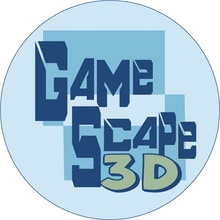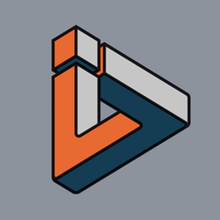What is a Lithophane?
Lithophanes are 3D printed picture impressions. These will typically look like a topographical map until it is lit from the back, and the image will appear. Today, I will be explaining how to set up your printer to print lithophanes and also investigating some different slicer settings regarding lithophanes. All of these lithophanes will be printed in Tronxy White filament on my Tevo Tornado. I will slice all of the files in Cura 3.6. I am by no means an expert in lithophanes, I have printed a lot of them though…
Lay It Down or Stand It Up?
There are two main ways to orient your lithophanes for printing, vertically and horizontally. I personally feel that much of the finer details are lost when printing horizontally. Your details will be limited to whatever diameter of nozzle you have when printing horizontally. Most 3D printers come equipped with a 0.4mm nozzle. Whereas, when printing vertically, the limit for detail is your layer height. I’ve printed many lithophanes at 0.2mm layer height and they look photo quality. Of course, 0.2mm isn’t the limit.. it’s just what I have found is a good compromise between speed and quality.
I personally am a fan of vertical lithophanes, so I am going to print vertically for this article. Additionally, I am going to use this royalty free image of a tiger from Pexels.com for all of my testing.
Make a Lithophane
Uploading and Image Settings
There are a few ways to do this, but I have had great results with the free tool from 3DPRocks. This allows you to easily upload and image and it spits out at STL file ready to load into your slicer of choice. Click here to go to 3DRocks lithophane generator. Click the ‘Images‘ link at the top and then browse to the picture of your choosing and upload it. Give it a few seconds to turn your image into a lithophane. Next, you need to click the ‘Settings‘ link above your image and choose ‘Image Settings‘ and make sure that it is set to be a ‘Positive Image‘. If you don’t do this, your contrasts will be all backwards. If you want to adjust the other settings for making your litho, now would be your chance.
Tweaking Your Model
Next, you should adjust any of the ‘Model Settings‘ that you want to adjust. I leave them all at default and have had great results. The only one that I routinely adjust is the ‘Maximum Size‘. Leave the ‘Thickness‘ to 3mm, this allows plenty of light through for all of the details. Also leave the ‘Thinnest Layer‘ to 0.8mm when printing vertically, this allows two nozzle passes in the thin areas. You may need to adjust these values for better quality in horizontal prints. I am going to use these as defaults for now, and I will make note of any changes that are made for better quality as I am doing the tests.
By clicking ‘Model‘ at the top you can also choose the way your lithophane is modeled. There are a few options to choose from, but for vertical prints, I choose either of the curves or flat. When doing horizontal prints it would be best to do flat only. After you change a layout, hit the ‘Refresh‘ button to update the model’s live view.
Make It Solid!
For the lithophane effect to work, your print MUST be as solid as possible. There are many ways to attain this, and I will be showing the different affects that this will have on your lithophane prints. The ways to achieve this, in no particular order are:
- 100% infill
- perimeters/walls thicker than your overall print
- top/bottom layers thicker than your overall print
You have to have the print as solid as possible for the best possible contrast ratio. You should NEVER use less than 100% infill, else you will see the infill pattern through the image.
Will the three ways listed above have any affect on your lithophanes? Let’s try it out!
Get Filled Up!
The first method I want to investigate is 100% infill. Will changing the infill pattern have any affect on the lithophane? I noticed that changing infill to 100% on Cura 3.6 caused the top layers to go to max, and Cura 3.6 ignored my infill patterns. This was odd and it might cause issues for other less experienced Cura users. So, I backed the infill down to 99% and Cura accepted the different infill patterns. I will try Lines, Zig-Zag, and Grid as the different infill patterns.
After examining the layers in the slicer for each of the above infill patterns, I noticed one glaring issue. The Grid pattern looks to have a high probability of showing the infill pattern. On the other hand, the Lines pattern appears to have the least amount of gaps. Will this equate to real differences when printing? We will find out!
Are More Layers (really) Better?
My preferred lithophane slicing method involves thick perimeters/walls. This is a great method with one caveat, the nozzle can’t get into tiny crevices. As a result, this could cause tiny gaps in your print where the thickness of the print won’t be enough for your nozzle width. Personally, I haven’t noticed any problems in printing them like this. The other way to make a lithophane with layers, is to use an excessively large number of top or bottom layers, like 999999999 layers. You will want to make this number LARGER than your litho. If you choose to do this, you should also adjust your wall/perimeter or top/bottom speeds to acceptable levels in your slicer.
You can see the there are more gaps in the thick walled version as opposed to the thick bottom/top layered version. The real question is though, will it matter?
The Fastest Way?
After going through all of these methods, I compared the overall print times across all of the printing methods. I found that using the high infill methods was quicker using my default settings, this is because I have infill set to print at a slightly higher speed than walls or top/bottom layers. As I stated earlier, if you configure the speeds to be the same there should NOT be a large discrepancy in print times. After adjusting my Tornado profile to the same speeds, they were all within 15 minutes of each other on a 2.5 hour print job.
The Rest of the Lithophane Settings!
I prefer to print my lithophanes slow enough to not have any chance of ringing or other speed related defects. You must be careful with the temperature because white filaments tend to scorch much easier than colored filament. Furthermore, failure to keep your temperature in check will cause burned bits of terribleness in your lithophane. Above all, it helps to have a good working profile to start with. If you are new to Cura and own a Tevo Tornado WITH a Micro Swiss All-Metal Hot End you can grab my Cura profile from here. If you are using the stock hotend, you will need to adjust your retraction settings from what I use.
Let’s See Some Lithophanes!
They all came out pretty good. I have used my Tornado to print a few lithophanes. As always there are way to improve your prints. I think the Z coupler on my Tornado is getting close to it’s end of life. I’ve got a 3D printed one on there now to replace the factory ‘spring coupler’ from Tevo. It might be due for replacement with a quality metal piece.
Lithophane Conclusion

Out of all of the prints, I personally think the infill ones look the worst. The thick walled and thick bottom/top layers looked and felt the best. There were some tiny blobs and defects on the back of the high infill prints that weren’t in the thick layered prints. I plan to do a few more lithophane articles, describing different photo editing techniques and colored filament. So, stay tuned!
I did print this lithophane on my Anycubic Photon, just for fun. It’s quality is above and beyond what I was able to accomplish on my Tevo Tornado. Of course, that’s what happens when you compare 0.2mm layer height against 0.025mm layer height! If you are interested in more lithophanes on my Anycubic Photon, stay tuned for a future article!
Be sure to check out any of the 3D Printing Software deals or 3D Printing Filament deals or coupons that we might have access to! Let me know your thoughts in the comments and stay tuned for my next article!
The post Lithophane Tutorial: 3D Printing Pictures on the Tornado! appeared first on Inov3D.












